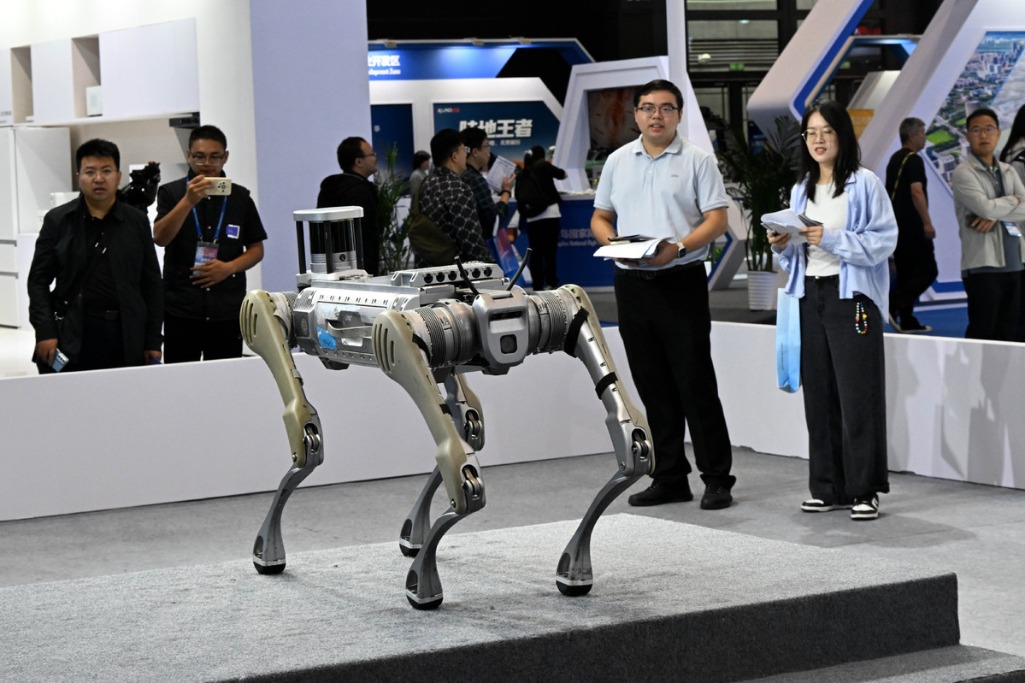Capital markets anticipate smooth sailing


Considering the impact at home and abroad so far as we can see, the main theme of China's capital markets through the second half will be to seek a smooth recovery despite the external turmoil, which is very likely to be the main tone of the nation's macroeconomic moves in the period as well. Damaged by external shocks such as inflation and tightening by the US Federal Reserve, as well as disruptions brought about by geopolitical tensions, China's economy is currently working to bring about a steady environment for recovery.
Inflation still underway
What other factors should be paid heed? One hot topic of late has been the high inflation in the United States. And there are more questions surrounding this issue in need of answers.
First, has inflation reached its peak in the US? We have run many calculations, and the results keep us from believing that inflation there has truly peaked. It is likely that the recent fall in overall prices is a reliable trend. However, if some assumptions are made on oil prices and the core services sector, US inflation rates will possibly see another rise in the third quarter this year.
The US reported an inflation rate of only 8.5 percent in July, much lower than that of the 1980's figure of 14.8 percent. It may seem that, in terms of the severity of inflation, there is a big gap between now and four decades ago. But if we take a wider look at inflation in more sectors, there may be a change in our perspective. For example, in the past two years, inflation was mainly related to major categories such as oil prices, rents, service industries and used car prices. But now, inflation has gradually expanded to more key categories.
Since 2000, the range of inflation has basically been relatively wide. When the span is too wide, inflation readings are likely to exceed expectations, and financial institutions and economists may enter a state of passive wait-and-see while prices continue to climb. This is also part of the reason why we believe that risks of higher-than-expected US inflation and interest rate hikes are still very real.
Further extending this view, we believe that US inflation rates are now more affected by supply-side factors, and there is little that monetary policymakers can do about it. In such a situation, the Fed can only temper inflation through a sharp and rapid tightening of monetary policy. But by observing various indicators, it can be seen that the US economy is still performing well, and has been in a relatively good place over the past few years. So in short, for now, US demand may be shrinking, but it's not collapsing.
We can thus read that the impact of the US economy on domestic market demand in the third quarter will be a result of "tightness"-that is, higher-than-expected inflation and higher-than-expected interest rate hikes-the joint impact of which will migrate to demand levels in the real economy. This may only start to take effect in the fourth quarter.
Concerns over downtrend worth noting
At a time when both inflation and rate hikes in the US are exceeding market expectations, any solid proof of steady recovery in China in the third quarter would create more optimistic sentiment at the financial level. We also anticipate a neutral and optimistic attitude toward the performance of domestic equities in the third quarter.
But entering the fourth quarter, there are several key variables pending in September, which are likely to raise concerns over the nation's full-year economic performance. The first variable is that China's consumer price index is expected to exceed 3 percent in September, raising concerns about a tighter monetary policy going forward. It is worth noting that the very issue should not be deemed as a short-term problem, and according to our research, inflation will probably linger above 3 percent until next spring. With such a level of inflation expected to last for months, investor concerns over tightening monetary policy are reasonable, and should be taken into consideration.
The second variable is foreign trade. As the Omicron variant has run rampant in Southeast Asian markets since last September, especially in Vietnam, production orders from the region have been flowing to China, thus boosting China's exports higher than anticipated. Therefore, in September, exports will face a super high base built up since September 2021, which means exports are likely to see year-on-year declines in September and even October, causing worries over the downtrend of exports, a traditional economic pillar.
The third variable is that by September, overseas monetary policy will have continuously tightened for half a year, and interest rate hikes in Europe will also be in place. Whether the expected decline in US demand in the fourth quarter will truly transpire should be more closely monitored to keep its impact under control.
The last variable is whether more major growth-stabilizing policies will be put forward in the fourth quarter. This is not likely as we see things, because if there is a good tool in the toolbox, it is more likely to be further implemented in the third quarter to achieve better results for this year.
Looking back at the economic performance of 2020, after COVID-19 was more effectively brought under control, there had been growth quarter after quarter, especially in the last quarter of that year when many sectors reported year-on-year growth rates exceeding 13 or 14 percent. This is what enabled the country to garner an impressive year-on-year GDP growth rate of more than 6 percent. However, when it comes to this year, it may be difficult to see such dazzling data in the fourth quarter again, because there is a lack of surging demand that can grow by as much as 10 percent. After a certain recovery in the third quarter, we believe the fourth quarter will enter a state of slightly weak or flat recovery.
In conclusion, though we have all learned that there will be a certain recovery in the domestic economy in the third quarter, for the fourth quarter it may be difficult for the country to continue to exceed expectations-in other words, to repeat the year-on-year GDP growth rate seen in the third quarter. The final quarter's growth figure may fluctuate within a narrow range, and the difference between the figures of the two quarters will not be bigger than 0.5 percentage point.
The writer is chief macroeconomic analyst at the Huachuang Securities Research Institute and a member of the China Finance 40 Young Economist Forum, a think tank. The views don't necessarily reflect those of China Daily.




































